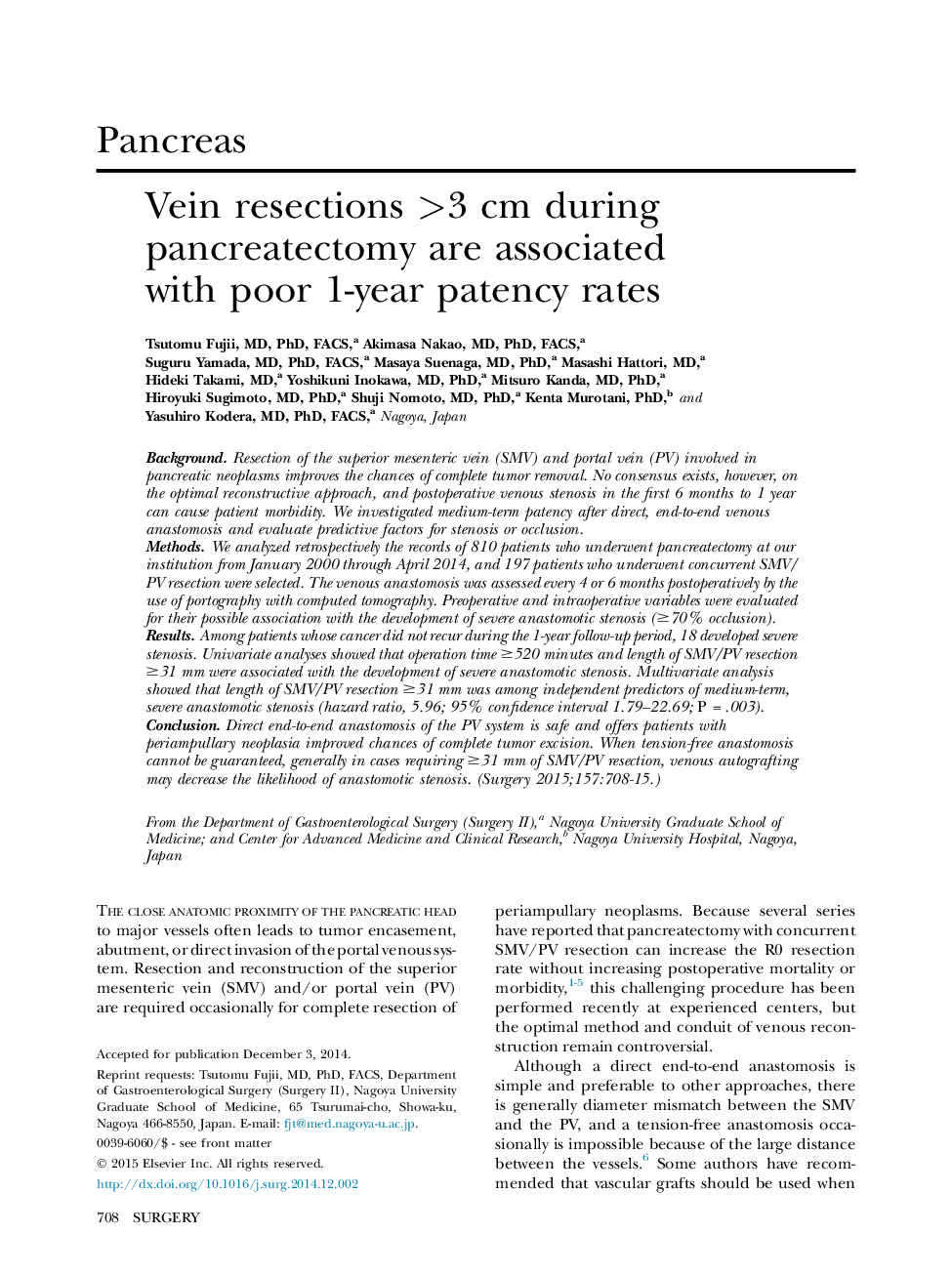| Article ID | Journal | Published Year | Pages | File Type |
|---|---|---|---|---|
| 4307178 | Surgery | 2015 | 8 Pages |
BackgroundResection of the superior mesenteric vein (SMV) and portal vein (PV) involved in pancreatic neoplasms improves the chances of complete tumor removal. No consensus exists, however, on the optimal reconstructive approach, and postoperative venous stenosis in the first 6 months to 1 year can cause patient morbidity. We investigated medium-term patency after direct, end-to-end venous anastomosis and evaluate predictive factors for stenosis or occlusion.MethodsWe analyzed retrospectively the records of 810 patients who underwent pancreatectomy at our institution from January 2000 through April 2014, and 197 patients who underwent concurrent SMV/PV resection were selected. The venous anastomosis was assessed every 4 or 6 months postoperatively by the use of portography with computed tomography. Preoperative and intraoperative variables were evaluated for their possible association with the development of severe anastomotic stenosis (≥70% occlusion).ResultsAmong patients whose cancer did not recur during the 1-year follow-up period, 18 developed severe stenosis. Univariate analyses showed that operation time ≥520 minutes and length of SMV/PV resection ≥31 mm were associated with the development of severe anastomotic stenosis. Multivariate analysis showed that length of SMV/PV resection ≥31 mm was among independent predictors of medium-term, severe anastomotic stenosis (hazard ratio, 5.96; 95% confidence interval 1.79–22.69; P = .003).ConclusionDirect end-to-end anastomosis of the PV system is safe and offers patients with periampullary neoplasia improved chances of complete tumor excision. When tension-free anastomosis cannot be guaranteed, generally in cases requiring ≥31 mm of SMV/PV resection, venous autografting may decrease the likelihood of anastomotic stenosis.
